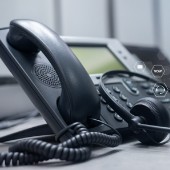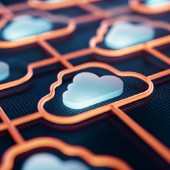How to prevent costly VoIP downtime
 Voice over Internet Protocol (VoIP) systems have emerged as a vital communication tool for businesses of all sizes. However, when these systems fail, it can negatively impact operations, productivity, and customer relationships. To prevent costly downtime, consider these seven strategies for keeping your VoIP system running smoothly and your business connected.
Voice over Internet Protocol (VoIP) systems have emerged as a vital communication tool for businesses of all sizes. However, when these systems fail, it can negatively impact operations, productivity, and customer relationships. To prevent costly downtime, consider these seven strategies for keeping your VoIP system running smoothly and your business connected.
Pick a dependable VoIP service provider
A reliable VoIP system starts with selecting the right provider. The quality of service among VoIP providers can vary significantly. Some may struggle with uptime reliability or lack robust security features. Partner with a provider offering strong uptime guarantees, regular maintenance, and comprehensive security protocols. Reviewing their service level agreements and reading customer reviews can help you gauge their reliability and performance.
Keep your hardware and software up to date
Outdated hardware and software are often the culprits behind VoIP service disruptions. That’s why it’s important to regularly update your network devices, such as routers, switches, and firewalls, to the latest models and software versions. Additionally, always run the most current version of your VoIP application. Staying up to date not only enhances performance but also strengthens security by addressing vulnerabilities that hackers frequently exploit in outdated systems.
Set up a secondary internet connection for backup
When your VoIP system depends on a single internet connection, any unexpected outage can bring business communications to a complete halt. To avoid this, implement a secondary internet line with a different service provider. This way, if your primary connection goes down, your VoIP system can automatically switch to the backup, ensuring uninterrupted communication.
Set up call forwarding and failover protocols
In the event of a VoIP system outage, having a reliable plan to reroute incoming calls is critical. Implement call forwarding protocols so you can redirect calls to alternative destinations such as mobile phones, backup VoIP lines, or voicemail. Automatic call forwarding keeps your team connected with clients and partners, minimizing service interruption.
Perform routine network health checks
Effective network monitoring is key to preventing VoIP downtime. Regularly assess your network using tools such as network analyzers or VoIP-specific monitoring software. Doing so helps you identify and proactively address potential issues, such as bandwidth limitations, network congestion, or latency problems, that could degrade VoIP call quality and disrupt communication.
Prioritize VoIP traffic with quality of service (QoS) protocols
Network congestion can impact VoIP call quality. To make sure VoIP calls remain crystal-clear and uninterrupted, implement QoS protocols on your network. QoS works by prioritizing VoIP traffic, allocating sufficient bandwidth to prevent issues such as dropped calls, delays, or poor audio quality caused by heavy network usage.
Use mobile apps for VoIP communication
When your primary internet connection fails, use mobile apps to stay connected. Many VoIP providers offer apps that turn smartphones into portable VoIP devices, allowing calls through mobile data. While this option might incur additional charges, it keeps you connected when other backup plans are unavailable.
Don’t wait for downtime to disrupt your operations. Take proactive steps today so your business stays connected and communication runs seamlessly.
If you’re looking to optimize your VoIP system, get in touch with our experts for tailored guidance and support.
 Voice over Internet Protocol (VoIP) downtime poses a serious risk, affecting productivity, client relationships, and revenue. However, by proactively implementing these seven strategies, you can keep your VoIP system running smoothly.
Voice over Internet Protocol (VoIP) downtime poses a serious risk, affecting productivity, client relationships, and revenue. However, by proactively implementing these seven strategies, you can keep your VoIP system running smoothly. Minimizing Voice over Internet Protocol (VoIP) downtime requires planning, proactive measures, and the proper tools and equipment. In this post, we’ll discuss seven strategies that will help your business maintain seamless communication.
Minimizing Voice over Internet Protocol (VoIP) downtime requires planning, proactive measures, and the proper tools and equipment. In this post, we’ll discuss seven strategies that will help your business maintain seamless communication. Discover how Microsoft 365 Connectors bring your favorite apps like Trello and Slack directly into your Microsoft Groups feed. This post explains how the integration helps teams collaborate better, communicate faster, and stay on top of updates without jumping between platforms.
Discover how Microsoft 365 Connectors bring your favorite apps like Trello and Slack directly into your Microsoft Groups feed. This post explains how the integration helps teams collaborate better, communicate faster, and stay on top of updates without jumping between platforms. This blog post explores the magic behind Microsoft 365 Connectors and how they unify multiple platforms into a single, streamlined interface. From automated updates to real-time team collaboration, find out how your organization can stay in perfect sync.
This blog post explores the magic behind Microsoft 365 Connectors and how they unify multiple platforms into a single, streamlined interface. From automated updates to real-time team collaboration, find out how your organization can stay in perfect sync. Is your team juggling too many apps? Learn how Microsoft 365 Connectors eliminate the chaos by centralizing communication and notifications within Outlook. This article walks through how these tools simplify your workflow and keep your entire team aligned.
Is your team juggling too many apps? Learn how Microsoft 365 Connectors eliminate the chaos by centralizing communication and notifications within Outlook. This article walks through how these tools simplify your workflow and keep your entire team aligned. Security concerns are on the rise as more businesses adopt multicloud environments. But there’s no need to fret. This article shares eight actionable tips to help organizations like yours secure their multicloud ecosystems, from building a centralized security authority to implementing robust access controls.
Security concerns are on the rise as more businesses adopt multicloud environments. But there’s no need to fret. This article shares eight actionable tips to help organizations like yours secure their multicloud ecosystems, from building a centralized security authority to implementing robust access controls. As multicloud architectures become increasingly prevalent, maintaining strong security has grown more challenging than ever. This article outlines eight key strategies for businesses looking to protect their cloud systems. Learn how to streamline security governance, minimize blind spots, and secure your environment across diverse cloud platforms for a unified and secure multicloud setup.
As multicloud architectures become increasingly prevalent, maintaining strong security has grown more challenging than ever. This article outlines eight key strategies for businesses looking to protect their cloud systems. Learn how to streamline security governance, minimize blind spots, and secure your environment across diverse cloud platforms for a unified and secure multicloud setup. Multicloud strategies offer flexibility and cost savings, but they also come with serious security challenges. In this guide, we highlight eight expert-approved practices to secure your multicloud environment. These tips will help you enhance collaboration across teams and implement a unified detection strategy, ultimately improving the security of your infrastructure against evolving threats.
Multicloud strategies offer flexibility and cost savings, but they also come with serious security challenges. In this guide, we highlight eight expert-approved practices to secure your multicloud environment. These tips will help you enhance collaboration across teams and implement a unified detection strategy, ultimately improving the security of your infrastructure against evolving threats. Your business generates massive amounts of data, but is any of it actually helping you? Without the right tools, raw data is just noise. Business dashboards are the solution. They organize and display your most important metrics on a single screen, helping you spot trends, track performance, and uncover valuable insights that would otherwise be overlooked.
Your business generates massive amounts of data, but is any of it actually helping you? Without the right tools, raw data is just noise. Business dashboards are the solution. They organize and display your most important metrics on a single screen, helping you spot trends, track performance, and uncover valuable insights that would otherwise be overlooked.